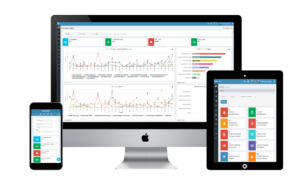With the evolution of teleradiology worldwide, some standards and tools have been created to help and facilitate the lives of health professionals, and it is ideal that they use the same language in order to communicate better.
We will show you a bit about our DICOM standards suite, and its main tools: PACS, RIS, LIS, and HIS.
DICOM: Digital Imaging and Communications in Medicine
The DICOM standards set was created in 1983 by the American College of Radiology in partnership with the National Electrical Association. Over the years, three versions were made to improve the system and also to expand PACS.
DICOM is nothing more than a set of standards created to standardize the format or protocols of electronic images, which are used for communication and storage, thus being evaluated equally even if they are from different systems.
Its main advantages are:
- Quality of images
- Ease of reading the information
- Agility for the physician
- Safety
- Accurate diagnosis
- Data sharing
PACS: Picture Archive and Communication System
In the late 1980s, a more in-depth study of image management began, when some of the main digital processes started to be more widely used in various hospitals.
PACS is a communication and archiving system used in image, video, and document diagnostics, which allows quick access in a digital format accessed remotely, with the possibility of storing files in DICOM format.
One of its main features was also the greatest need of the time, which was for a system that could interact with different technologies used for this service.
Its main advantages are:
- Secure storage
- Agility of response and visualization
- Cost reduction
- Decreased time searching for exams
- Standardization
- Integration
RIS: Radiology Information System
Ris is the term used for a system of intelligent tools for diagnostic imaging centers, automating the workflow. This system goes from registration and record keeping to the issuing of medical reports, all done remotely.
The processes gain in service speed, productivity, and planning, which are extremely important for reports that require urgency. Not to mention that they standardize their procedures.
Its main advantages are:
- Secure Data Storage
- Speed
- Team productivity
- Cost reduction
HIS: Hospital Information System
HIS is software, which is focused on the administrative needs of a hospital. It basically operates everything within a hospital, from financial to administrative. The software can do surveys of consultations performed, admissions, surgeries, patient history, etc…
Its main advantages are:
- Secure data storage
- Speed of finding patients in the system
- Integration
- Productivity




